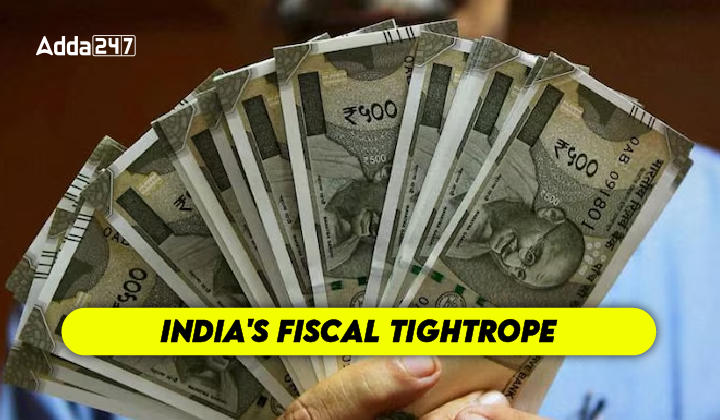Table of Contents
The Centre’s fiscal deficit has widened sharply from ₹11 lakh crore in January to ₹15 lakh crore at the end of February. This represents a significant increase compared to last year when the deficit stood at 67.6% of the target by January and reached 82.6% in February.
Factors Contributing to the Increase in Fiscal Deficit
The surge in fiscal deficit can be attributed to two primary factors:
- Increased Tax Devolution to States: The Central government transferred around ₹2.15 lakh crore to states in February 2024, compared to ₹1.4 lakh crore in the same period last year. This rise in tax devolution contributed to the widening deficit.
- Higher Capital Expenditure: Capital expenditure increased from ₹0.476 lakh crore in January 2024 to ₹0.844 lakh crore in February 2024. This growth in spending helped narrow the gap but still resulted in a higher deficit compared to last year.
- Deficit Targets and Revisions: The government aimed to bring the fiscal deficit down from 6.4% of GDP in 2022-23 to 5.9% in 2023-24. This was further revised to 5.8% in the interim budget. The long-term goal is to reduce the deficit to 4.5% of GDP by 2025-26, with a target of 5.1% for 2024-25.
March 2024 Target and Potential Impact
To meet the government’s ₹10 lakh crore capital expenditure target for the financial year, March 2024 would require an expenditure of ₹8.68 lakh crore. However, the implementation of the Model Code of Conduct for the Lok Sabha polls in mid-March could potentially affect this target by tempering spending.
India’s Fiscal Deficit: Widening Gap and Uncertain Future
Challenges and Uncertainties:
- The significant deficit rise in the first few months of 2024 casts doubt on the achievability of the revised target.
- The full budget after the general election may need to recalibrate the deficit glide path depending on the new government’s priorities and economic conditions.
Government Strategy and Potential Obstacles:
- The government relies on increased public capital expenditure (capex) to stimulate growth post-pandemic.
- However, high inflation, potential monsoon issues, and uneven consumer demand threaten private investment, a crucial factor for long-term growth.
Revenue Spending and Potential for Lower Deficit:
- While some spending headroom exists for March 2024, particularly in crucial ministries like Agriculture, Rural Development, and Consumer Affairs.
- Missed spending targets in some ministries could lead to a lower-than-expected full-year deficit, a positive surprise.
Balancing Act: Tightening Belts vs. Achieving Outcomes:
- While fiscal discipline is necessary for long-term economic health, consistently underspending on critical areas can compromise desired outcomes.
- This highlights the need for more efficient planning and allocation of resources to reduce borrowing needs in the future.
Conclusion
The Indian government’s fiscal deficit has risen considerably in the first two months of 2024. While increased spending on capital expenditure helped bridge the gap somewhat, it remains higher compared to last year. The upcoming Lok Sabha elections and the associated Model Code of Conduct might further influence spending patterns in March 2024. It will be interesting to see how the government manages the fiscal deficit in the remaining part of the financial year.



 TSPSC Group 1 Question Paper 2024, Downl...
TSPSC Group 1 Question Paper 2024, Downl...
 TSPSC Group 1 Answer key 2024 Out, Downl...
TSPSC Group 1 Answer key 2024 Out, Downl...
 UPSC Prelims 2024 Question Paper, Downlo...
UPSC Prelims 2024 Question Paper, Downlo...




